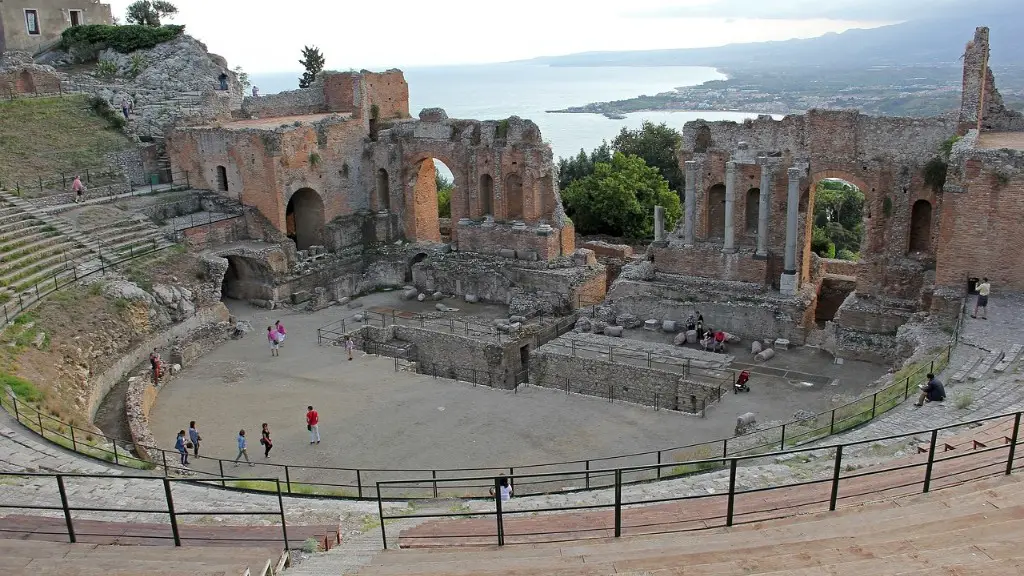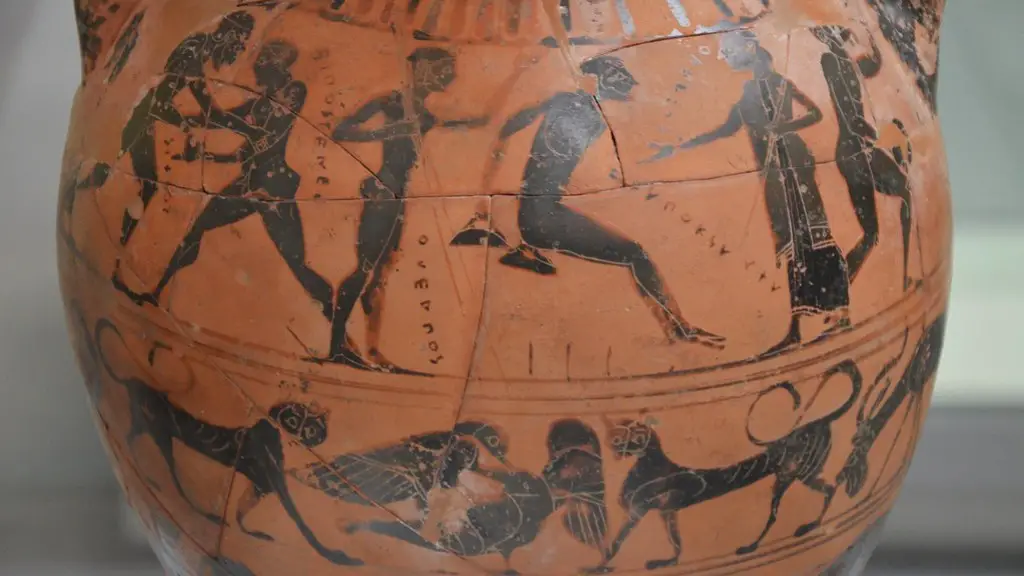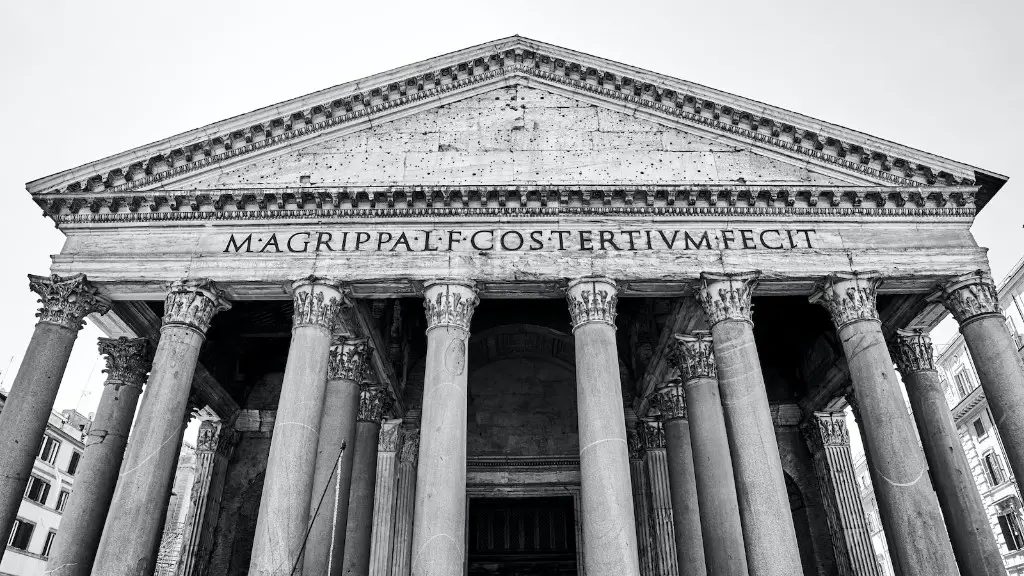Food and gastronomy were integral parts of life in Ancient Rome. The food of the ancient Romans was largely based on simple, nutritious and readily available ingredients, such as grains, vegetables, fruits and meat. This basic diet – along with other ingredients like wine, honey, spices, cheese, and olive oil – allowed ancient Romans to create a wide range of dishes and recipes.
According to historians, ancient Roman cuisine was a combination of Greek and Roman tastes and flavors. Grains such as wheat, barley and millet were the main staples of the Roman diet. Bread, porridge, and pasta were all consumed in significant quantities. Vegetables, herbs, and fruits added flavor, while pulses, including chickpeas, lentils, and broad beans, were also popular. Fish and seafood were also a regular feature in many ancient Roman dishes. Meat – from domestic animals such as pork, beef, and lamb – was also regularly consumed.
In the higher classes of society, food was a luxury and a source of pride. Rich Roman families ate elaborate meals, often served in several courses. Wealthy families dined on exotic dishes and ingredients, such as caviar, peacock tongues, and honey-roasted dormice. But, even among the lower classes, food was an important part of life. Street vendors sold a variety of snacks, while taverns and guesthouses served simple but filling meals.
Roman cuisine was also heavily influenced by geography. For example, dishes from the coastal regions of Italy used more seafood than inland areas, while mountainous regions favored game meats. Ancient Romans also ate what was in season, and believed food was best when it was fresh. Therefore, the Roman diet varied throughout the year and was based on the idea that the freshest ingredients were most likely to be healthier and more nutritious.
Additionally, ancient Romans valued presentation and took great pride in presenting their food artfully. Meals were often accompanied by elaborate decorations, such as colorful tablecloths and intricate centerpieces. Sauce was also used to both enhance the flavor of food and create visual appeal.
In conclusion, Ancient Romans had a diverse and sophisticated diet. This diet was heavily influenced by geography, seasonality, and availability of ingredients. Roman foods were elaborately presented and greatly valued by society.
Breakfast Foods
Breakfast in Ancient Rome was typically a light meal, consisting of bread with honey or oil, cheese, and sometimes fruit. Eggs were also a popular breakfast item and were usually eaten with herbs. Honey, fruit, and nuts were also widely consumed as a light meal, as well as porridge made from barley and millet. Almonds were often used for desserts, cakes, and pastries.
Snack Foods
Street vendors during Ancient Rome sold a variety of snacks, from savory items such as chickpeas, olives, and freshly baked bread, to sweet treats like honey cakes and nutty pastries. Romans also enjoyed snacks that were savory and sweet, such as sugared almonds, honeyed figs, and gingered dates. These snacks would be washed down with wine, beer, or cold water.
Main Dishes
The Roman diet differed according to social class and wealth. Upper class citizens enjoyed elaborate meals served in several courses, while the lower classes typically ate simple fare. Common main dishes included pasta dishes such as lasagna, fried or steamed vegetables, soups, and stews made with meat and vegetables. Meat-filled pies and stuffed vegetables were also popular.
Desserts and Sweets
Desserts were typically served after the main meal, and often consisted of fresh fruits, honey cakes and pastries. Sweets such as sugared nuts and dried fruit were also popular. Romans also enjoyed flavored wines and liqueurs, as well as hot drinks made with honey, spices and herbs.
Nutrition and Dietary Habits
Ancient Romans were aware of the importance of a balanced diet and believed that fresh ingredients were essential for good health. They had an understanding of nutrition and many believed in the power of certain foods to help maintain a healthy body. Ancient Romans also practiced healthy eating habits, such as not overeating, and they valued moderation in all aspects of life.
Food Preservation and Preparation Techniques
The ancient Romans practiced a variety of food preservation and preparation techniques. They salted, smoked, fermented, and pickled foods, as well as using wine and herbs to preserve and flavor foods. Ancient Romans also practiced shallow-frying and roasting, as well as baking bread in special ovens.



